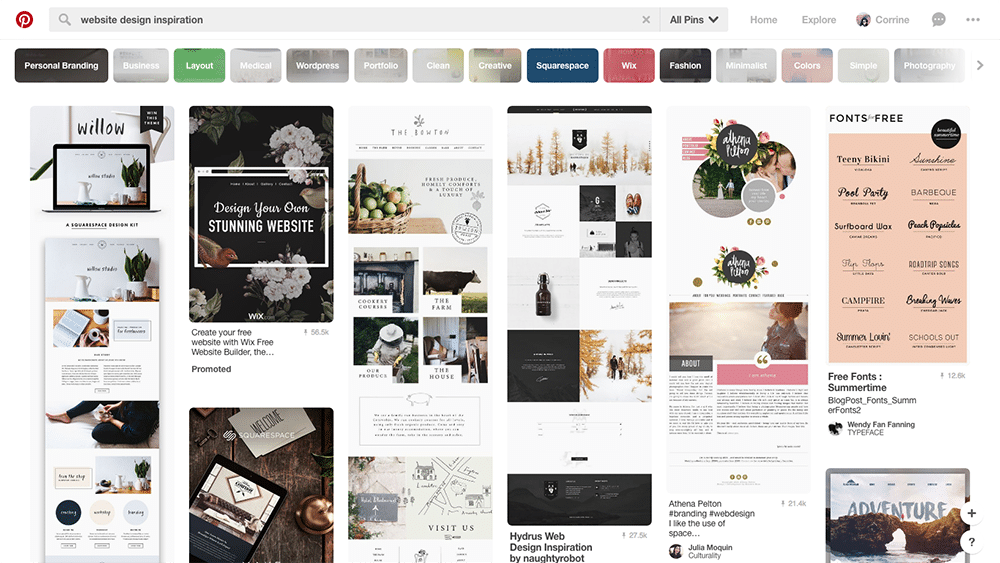Unlocking the Secrets to Remarkable Web Design for Your Business
Discovering the Effect of Receptive Web Layout on Access and Customer Fulfillment Throughout Different Instruments
The development of receptive web style (RWD) has actually transformed the electronic landscape, particularly in boosting ease of access and customer complete satisfaction throughout a wide range of tools. By employing adaptive user interfaces and adaptable layouts, RWD not only provides to diverse individual demands yet also addresses the essential importance of inclusivity in web experiences. As we check out the nuanced interplay between RWD, mobile website traffic, and user interaction, it comes to be vital to consider exactly how these components jointly affect total site efficiency. What effects does this have for future design techniques and individual expectations?
Interpretation of Receptive Website Design

The core concept of RWD is to provide an optimal viewing experience, that includes easy reading and navigating without the need for excessive resizing or scrolling. This adaptability is vital in an electronic landscape where individuals accessibility information via different tools with differing display resolutions. RWD not only boosts functionality but likewise boosts lots times, as it generally utilizes a single codebase to serve numerous gadgets, reducing the demand for different mobile websites.
Eventually, Responsive Website design intends to produce a cohesive and engaging individual experience, making sure that web content is functionally reliable and aesthetically attractive, no matter of the gadget being used. This adaptability is vital in satisfying the varied requirements these days's net customers, cultivating involvement and complete satisfaction across systems.
Value of Ease Of Access
How can we make sure that all individuals, no matter of their capabilities, can engage with internet content efficiently? Ease of access in website design is of critical relevance, as it promotes inclusivity and makes certain equal accessibility to info for people with specials needs. This encompasses aesthetic, auditory, and cognitive disabilities, requiring designers to consider diverse customer needs.

By focusing on availability, organizations not only abide by legal needs yet likewise boost their brand credibility, showing a commitment to social duty. Available internet sites typically result in boosted usability for all individuals, as attributes developed for inclusivity can profit a broader audience.
Ultimately, the significance of access transcends mere conformity; it is regarding developing an electronic setting where every customer can browse, understand, and involve with content efficiently, consequently improving the overall web experience for everyone.

Customer Fulfillment Across Devices
Several individuals anticipate a seamless experience when accessing internet content across different tools, from desktop computers to mobile phones. This expectation is rooted in the raising diversity of devices and display her comment is here dimensions readily available today. Receptive internet layout (RWD) plays a critical duty in satisfying these expectations by guaranteeing that internet sites adjust fluidly to different display atmospheres.
Customer satisfaction is considerably influenced by the ease of access and usability of a website. When customers can conveniently browse, check out, and connect with material despite the tool they are using, their overall satisfaction boosts. A well-implemented receptive design reduces the demand for zooming or horizontal scrolling, which can lead and discourage users to higher bounce prices.
As users involve with material that is tailored to their tool, they are extra likely to spend time on the website, return for future sees, and suggest it to others. Ultimately, receptive internet style cultivates a positive relationship in between individuals and internet material across tools.

Effect on Mobile Users
Over 54% of global internet traffic currently originates from mobile tools, highlighting the important value of optimizing internet experiences for this user base. Receptive website design (RWD) plays a critical duty in enhancing access and individual satisfaction for mobile individuals. By adapting design, photos, and performances to various screen sizes, RWD makes certain that material is not just visually enticing but likewise conveniently navigable, no matter the device utilized.
The influence of RWD on mobile users prolongs past aesthetic appeals; it significantly influences functionality. A properly designed responsive site minimizes the need for excessive scrolling and zooming, assisting in an extra intuitive interaction. Additionally, it cultivates inclusivity by accommodating individuals with differing capacities, ensuring that those who count on mobile phones can access details effortlessly.
In addition, mobile customers take advantage of faster packing times, as RWD maximizes sources based on tool capabilities - web design. This efficiency is vital, as mobile individuals usually look for fast details and might desert sites that stop working to pack without delay. Inevitably, the assimilation of receptive internet style is necessary for satisfying the diverse requirements of mobile users, enhancing their overall experience and motivating ongoing involvement with the material
Finest Practices for Implementation
Executing responsive internet layout (RWD) successfully needs adherence to a number of finest practices that ensure optimal performance throughout gadgets. Utilizing a liquid grid design is important; this allows components to resize proportionally based on the screen measurements, supplying a look here seamless experience. In addition, utilizing flexible photos makes sure that visuals scale appropriately without losing top quality or triggering layout problems.
Next, applying media inquiries is crucial for using different designs based on gadget qualities. These questions make it possible for designers to tailor the customer experience for particular resolutions, enhancing usability and access. Additionally, prioritizing mobile-first layout can result in better efficiency by click here now initially concentrating on the smallest displays and progressively boosting the experience for larger gadgets.
It is also crucial to on a regular basis test the web site throughout various systems and devices to determine prospective use issues. Tools such as internet browser developer tools and receptive layout testing services can help in this procedure. Making certain that all interactive elements are touch-friendly and maximizing web page tons times substantially contribute to user satisfaction and availability. By adhering to these ideal practices, companies can develop a robust and easily accessible web visibility that fulfills the diverse demands of users across various tools.
Final Thought
Finally, receptive website design plays an essential role in boosting availability and individual satisfaction throughout diverse tools. By carrying out versatile grids, images, and media inquiries, RWD assists in a seamless customer experience, especially for individuals with handicaps. As mobile usage continues to increase, the fostering of RWD becomes crucial for delivering functionally effective and aesthetically attractive websites. Inevitably, the combination of best methods in responsive style fosters inclusivity, lowers bounce rates, and advertises greater individual engagement.
The introduction of receptive internet style (RWD) has actually transformed the electronic landscape, particularly in improving access and user complete satisfaction throughout a plethora of tools.Responsive Web Design (RWD) transforms the individual experience throughout numerous tools by making certain that web content adapts fluidly to different screen sizes and orientations. Ultimately, responsive web design fosters a positive relationship between users and web content across devices.
Over 54% of global web traffic currently stems from mobile tools, highlighting the essential importance of maximizing internet experiences for this customer base. Receptive web design (RWD) plays a critical role in enhancing ease of access and customer contentment for mobile customers.